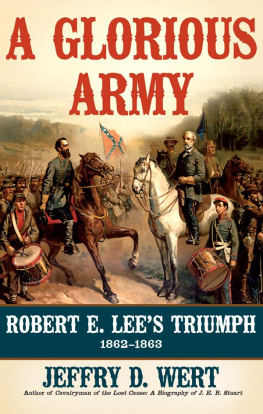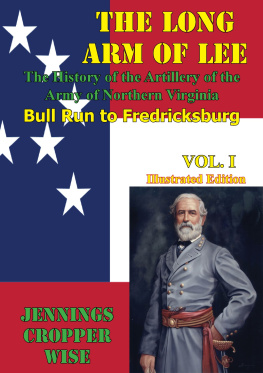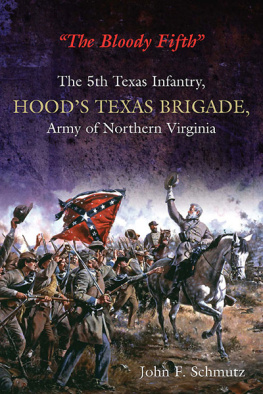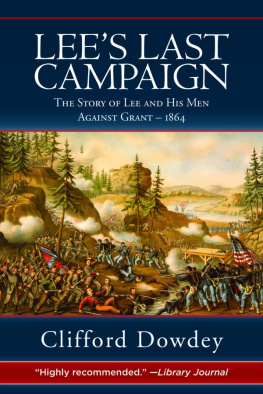Published by Louisiana State University Press
Copyright 2017 by Louisiana State University Press
This volume is a revised and expanded edition of Lees Tigers: The Louisiana Infantry in the Army of Northern Virginia, copyright 1987 by Louisiana State University Press.
All rights reserved
Manufactured in the United States of America
First printing
DESIGNER: Mandy McDonald Scallan
TYPEFACE: Whitman
PRINTER AND BINDER: Sheridan Books Inc.
Library of Congress Cataloging-in-Publication Data
Names: Jones, Terry L., 1952 author.
Title: Lees Tigers revisited : the Louisiana Infantry in the Army of Northern Virginia / Terry L. Jones.
Other titles: Lees Tigers
Description: Baton Rouge : Louisiana State University Press, [2017] | Includes bibliographical references and index.
Identifiers: LCCN 2017019256| ISBN 978-0-8071-6851-6 (cloth : alk. paper) | ISBN 978-0-8071-6852-3 (pdf) | ISBN 978-0-8071-6853-0 (epub)
Subjects: LCSH: LouisianaHistoryCivil War, 18611865Regimental histories. | United StatesHistoryCivil War, 18611865Regimental histories. | Confederate States of America. Army of Northern VirginiaHistory. | VirginiaHistoryCivil War, 18611865Campaigns. | United StatesHistoryCivil War, 18611865Campaigns.
Classification: LCC E565.4 .J65 2017 | DDC 973.7/3dc23
LC record available at https://lccn.loc.gov/2017019256
The paper in this book meets the guidelines for permanence and durability of the Committee on Production Guidelines for Book Longevity of the Council on Library Resources.

PREFACE
As the sun slowly set, Gens. Robert E. Lee and Jubal A. Early anxiously watched Earlys division advance across a rugged, open plain toward the Union positions. The ragged gray line suffered occasional casualties as federal gunners found the range and pounded it with solid shot and canister. Steep hills and deep gullies further broke up the Confederate charge as the rebels closed in on the Union breastworks. Watching from his vantage point, Early became dismayed when it appeared that his division would be repulsed before even closing with the enemy, but his spirits lifted when he saw Gen. Harry T. Hays Louisiana Brigade rush in and penetrate the enemy line. The blue defenders could be seen scampering back to a secondary position, only to be swept away again by the surging gray tide closing in behind them. As the victorious rebel yell rose over the field, Early momentarily forgot Lee beside him and jubilantly threw his hat on the ground and cried out, Those damned Louisiana fellows may steal as much as they please now!
Jubal Early was one of many Confederate officers who struggled with the paradox known as the Louisiana Tigers. He tended to agree with those who called the Tigers wharf rats from New Orleans and the lowest scrapings of the Mississippi, and accused them of plundering and foraging on nearby farms wherever they camped. However, the Tigers were reliable in combat, and the general readily forgave the Louisianians for their past transgressions as he watched them swarm over two Union lines near Fredericksburg, Virginia, on May 4, 1863. Even though the federals finally stopped and then repulsed the attack, the Louisiana Tigers had once again proven themselves to be the premier shock troops of the Army of Northern Virginia.
The Tigers fierce reputation was well earned, for Louisiana probably had a higher percentage of criminals, drunkards, and deserters in its commands than any other Confederate state. This fact might be attributable to the large number of poor immigrants who filled their ranks. The Irish and Germans made excellent fighters, but many were newcomers to America and had little enthusiasm for the war. As a result, hundreds deserted when a chance arose to escape the rigors and dangers of campaigning. Other foreigners who enlisted off the rough New Orleans waterfront, where drinking, fighting, and thievery were a way of life, naturally brought their vices with them to the army. However, this is not to imply that all of Louisianas foreign-born soldiers became deserters and thieves. The majority did not. Most of them were dedicated soldiers who behaved as well as the native-born Americans. Nevertheless, the Tiger units that were dominated by foreign-born men were the units most often mentioned in connection with such deviant behavior.
Several Louisiana units were responsible for creating the Tigers infamous reputation. Most prominent were the 1st Battalion, Louisiana Zouaves (Coppens Battalion), and the 14th Louisiana Volunteers. Those units wholesale rioting, looting, and robbery did more to tarnish the image of Louisianas soldiers during the first few months of the war than any other. However, it was Maj. Roberdeau Wheats 1st Special Battalion that gave birth to the nickname Louisiana Tigers. The Tiger Rifles, a Zouave company in Wheats Battalion, proved to be as lawless as Coppens Battalion and the 14th Louisiana, and its well-publicized mayhem eventually led to all Louisiana soldiers in Virginia being dubbed Tigers.
In an effort to glorify the Louisiana troops, some early historians only touched on the Tigers seamier side, or else portrayed their misdeeds as more childlike mischief than criminal behavior. Such apologies are unnecessary. Despite the Tigers dark reputation, Confederate commanders time and again called on them in the most desperate situations. From First Manassas to Appomattox they consistently played key roles in the most important campaigns. It was the Louisianians who held back the initial federal onslaught at First Manassas, made possible Gen. Thomas J. Stonewall Jacksons famous Valley Campaign, used rocks to defend their position at Second Manassas, broke the Union lines at Gettysburg, contained the Union breakthrough at Spotsylvanias Bloody Angle, and led Lees attempted breakout from the Petersburg siege at Fort Stedman. For all their vices, Lees Louisiana infantry emerged from the Civil War with one of the most respected military records, and the name Louisiana Tigers was recognized across the North and South.
The first person to write a history of the Louisiana Tigers apparently was W. Albertus Koch, an editor for the New Orleans Daily Item. Koch spent forty-two years compiling his History of the Louisiana Tigers, only to lose it in 1915 when the satchel it was in disappeared while he was traveling by train to a veterans reunion. Infuriated, Koch rushed to a group of Tiger veterans and interrupted their singing of Were Burying the Yankees in the Big Bayou to inform them of the theft. Comrades, he cried, some tarnation rapscallion has sloped with my gripsack. They quickly organized a search party, but nothing was found, and Koch was inconsolable. Vowing to continue the hunt, he promised, When I lay these hands of mine upon him I promise you I will twist the rascal around his own neck until there is nothing left of him but the ends of his shirt collar sticking out of his thievish eyes. As it turned out, a Virginia veteran had mistaken the satchel for his own and taken it from the train. When he realized his error, he contacted Koch and returned his property. Unfortunately, Koch never published his History of the Louisiana Tigers, and its location today is not known.









